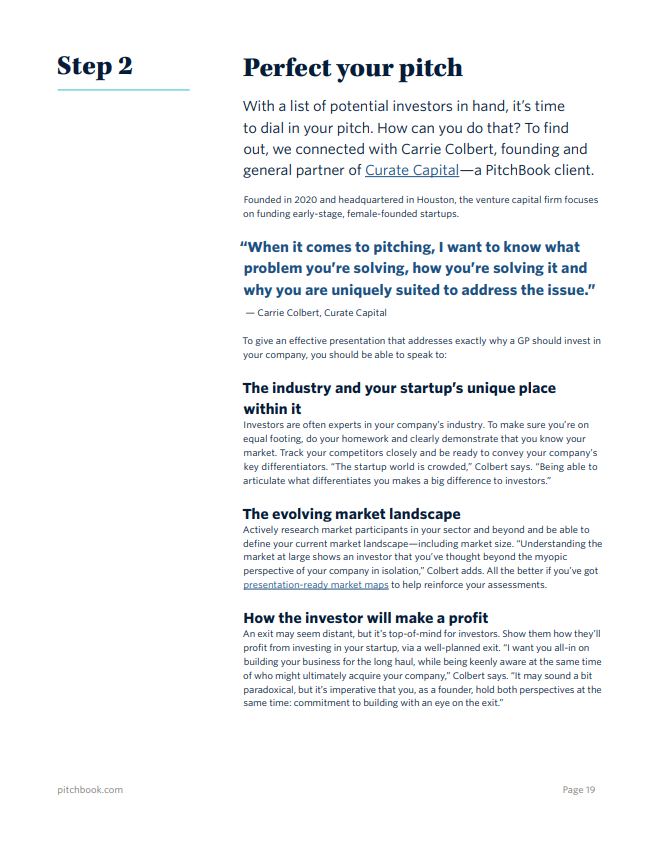VC fundraising guide for startups
Building a business from scratch is hard, full stop. The opportunity is there, and veteran founders, first-time entrepreneurs and other innovators can see it—but the startup landscape is fraught with challenges and roadblocks that can make realizing that opportunity difficult, to say the least.
The goal with this guide was to create an evergreen resource for prospective clients in the startup space. More specifically, I dove deep into the VC landscape to support founders, exploring the pros and cons of self-funding and external funding and how to approach—and wow—investors once they’ve decided their startup is ready to.
Creative process
The VC fundraising guide was an opportunity for the creative working team—two designers and a writer (me!)—to “stretch” the creative brief. We were given general feedback on what the project aimed to accomplish, but leeway in terms of the content and design direction.
I’ve never founded a startup, so I didn’t have that experience to pull from firsthand. Instead, while planning out and writing this guide, I used the extremely relatable feelings of overwhelm and decision fatigue associated with a new, massive endeavor. When the stakes are high and your next steps are unclear? Woof. I can feel that to my bones.
My initial copy outline included H1, H2, and H3 headings I thought would most help a founder at the start of their fundraising journey. For each section, I listed the main points I’d make and the questions I’d attempt to answer. When the outline was finalized, I really got to work. Eventually, I had a 5,500-word final copy draft that represented my best attempt to give readers the information they were looking for.
After that, my design colleagues and I collaborated to bring the guide to life. That included brainstorms, wireframing, and whiteboard sessions. The photos below show a tiny slice of that creative work. Some of my design ideas were incorporated into the final guide, including a two-page VC landscape visual and a quiz. I worked in lockstep with SEO experts, industry analysts, and customer marketing to maximize the effectiveness of this asset, as well.
The final product:
PitchBook’s guide to VC fundraising for startups
Across 25+ pages, the final product dives deep into how VC funding works—complete with a quiz founders can take to discern whether self- or external funding is the best fit for their unique circumstances, a step by step gameplan for VC interactions, first-hand advice from venture capitalists about what they look for, and more.
Since the guide’s release, its download page on the PitchBook blog has garnered 8,500 unique pageviews and generated more than $20,000 of first-touch revenue. It’s been used by PitchBook sales reps in hundreds of conversations with prospective clients, too.
See a selection of the guide’s pages below or view the complete doc.
Promotional materials
PitchBook’s guide to VC investing for startups was promoted via paid and organic social, display ads and outreach emails. As the writer on this project, I developed the copy for these ancillary assets aimed at helping more people find their way to the guide’s download page.













